THE EXPLAINER: Understanding political party structure and decision making processes

Audio By Vocalize
So, what’s the difference between the NGC, NDC, NEC?
There are 4 key party organs. The National Executive Committee (NEC), the Party Secretariat, the National Governing Council (NGC), and the National Delegates Conference (NDC), many of which we have seen happening lately.
Now, the NEC is the organ that is mandated with the day-to-day running of the party’s affairs. It would typically be domiciled at the party headquarters. It comprises the Chair of the party, Secretary General, Organising Secretary, Treasurer, Youth and Women leagues leaders, the party leader and their deputy. It would typically have 10-15 persons.
It is charged with making decisions that affect the day-to-day running of the party. Keeping the lights on, if you will. From approval of budgets, paying bills, hiring and firing of workers. It is the party’s planning organ, preparing the agenda for the meetings such as those of the NGC and NDCs.
The National Governing Council is the second highest decision making organ of a party. It approves the agenda that has been put forth by the NEC. It thrashes out proposals from the NEC before presenting that to the NDC, so it may refine whatever comes from the National Executive Committee, make amendments or adjustments to their proposals or items on their agenda. Meaning, no proposal gets to the NDC before approval by the NGC. That is why recently, we have seen both ODM and Jubilee have the NGC a day before the NDC. UDA did both on the same day, one meeting before the other. Now this council is much bigger than the NEC. It consists of members of the NEC, all elected officials on the party ticket, that is MPs, MCAs, Senators, County Woman Representatives. Basically, it has representation from each county.
Now, the National Delegates Conference is the highest decision making organ of a party. The members here are basically the owners of the party, wenye chama. Much bigger numbers we see here. Delegates from each constituency. These delegates are those elected by party members at the grassroot level, at ward, constituency, or what are known as party branches. At the NDC, we also have all elected members, aspirants. So basically the NDC has members of the NEC, the NGC and elected delegates from each constituency. For example, ODM had about 3,000 delegates, UDA recently had 5,000 delegates. So, the NDC can decide on expulsion of members, can ratify amendments to the party constitution or even overturn the constitution and pass an entirely new one.
It approves the party agreements and can then authorise the leadership of the party to go into coalition agreements with other parties, as we have seen happening lately. This means a party leader cannot make a unilateral decision to enter into agreement with another party, without authorisation from the NDC. Decisions made by the NDC are final and cannot be overturned by anyone other than the delegates themselves. Not even the party Chair can reverse these decisions. Unless of course another National Delegates Conference is held and the members make a decision to reverse one they had made earlier. So, for instance, in the recent UDA NDC, following his endorsement to run for president on the party’s ticket, William Ruto cannot then decide to nominate someone else instead, without first going back to the NDC for them to make this change.
The decisions at the NDC are procedural, for instance with the nomination of a presidential candidate, there would have to be a proposer and a seconder. Decisions are made either by consensus, that is by acclamation or through a vote.
Now, with the amendments to the Political Parties Act that allowed for the formation and recognition of coalitions as political parties, you would now see joint NDCs taking place. With the constituent members of a coalition now conducting a delegates conference to endorse a joint presidential candidate. Like the joint NDC for the Kenya Kwanza that is now expected soon to decide who will be the flag bearer of the coalition, or the joint one we saw for the Azimio la Umoja coalition over the weekend.
Lastly, we have the Secretariat. This body is the implementer of the decisions made by all other party organs, the NEC, NGC and NDC. They are the backbone of the party. They conduct facilitation, set up of party meetings, handle logistics and communication for instance to party members on date, time and venue of party meetings and more. These are the employees of the party, hired and fired by the NEC.


Leave a Comment